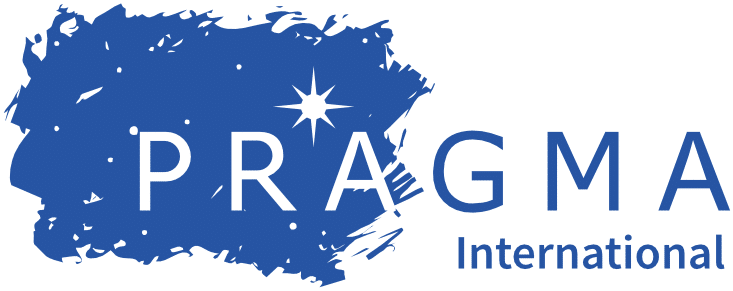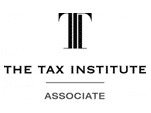Sadly, for the applicant, not much “separately” as AAT Deputy President McCabe held in Miley and FCT [2019] AATA 5540 (23 December 2019, reported at 2020 WTB 1 [25]).
This issue was agitated by the applicant in his third piece of litigation with the Commissioner. The case highlights the importance of valuation methodologies in tax matters, especially CGT-related cases.
Readers may recall the Applicant was successful in asserting his CGT small business concession claims involving a minority discount of 16.7% in Miley and FCT [2016] AATA 73 (reported at 2016 WTB 7 [205]) which was overturned on appeal in FCT v Miley [2017] FCA 1396 (reported at 2017 WTB 51 [1777]).
Facts
The basic facts were:
- The applicant owned 100 shares in a company, AJM Environmental Services Pty Limited (AJM). The company had 2 other shareholders. Each of them owned 100 shares.
- The 3 shareholders entered into a single Contract of Sale and Purchase (the sale contract) under which they each agreed to sell their shares in AJM to EIMCO. They also agreed to sell their shares in another company they jointly controlled called AJM Properties Pty Ltd.
- The purchase price was $17.7 million. Each of the sellers received a total of $5.9 million from the purchaser in connection with the sale.
- EIMCO was at arm’s length from the vendors.
The sale contract included a term requiring each of the sellers to enter into an employment agreement with the company for a term of 5 years requiring each individual seller to promise AJM and the purchaser group not to compete with them for 5 years after the sale.
The sale contract did not attribute or assign any value to the applicant’s agreement to enter into the employment agreements or to their agreement to the non-competition clauses.
Applicant’s main issue
The applicant’s problem was that the Commissioner insisted on relying on the “all in” sale contract price of $5.9 million for his shares in the above companies. That figure pushed the applicant’s and his affiliated group’s net CGT assets above the mandatory $6 million maximum net asset value threshold test under s 152-15 ITAA 97.
That test must be satisfied “just before the CGT event” occurred, here being CGT event A1. This event normally occurs at the date or time the last contracting party signs the sale contract.
Applicant’s main argument
The taxpayer’s main argument was the sale contract itself conferred 2 valuable items of property on the purchaser for the purchase price, being:
- first, the applicant’s 100 shares in the above companies; and
- secondly, the restrictive covenant of the applicant not to compete for a period of 5 years after completion (RC rights).
Thus, as the RC rights were created by the sale contract, they could not logically exist “just before the CGT event” being the date or time the last party signed it.
As the purchase price of $5.9 million was paid for both the shares and the RC rights, if the latter had material value, the applicant argued the same should be deducted from the total value of $5.9 million and hence the applicant’s net CGT assets.
Expert opinions aligned
Both the applicant and the Commissioner led expert valuation evidence. Unusually, there was no material difference between them on the following key points:
- Absent the RC rights, the purchaser would have paid less for the shares.
- The value of the company AJM without the RC rights is less than its value with them.
- The Commissioner’s valuer did not dispute the $1.6 million figure the applicant’s valuer placed on the RC rights brackets (see paragraph 32). The RC rights didn’t exist prior to the signing of the sale contract. Rights were created concurrently with the same being signed (see paragraph 36).
Importantly, to the applicant’s SBC claim, his total CGT net assets would be reduced by this sum of $1.6 million under his argument, as due to this finding, the RC rights didn’t exist just before the sale contract was signed.
AAT view
However, the AAT took a purposeful and holistic view of the commercial transaction. That being, the pre contract value of the shares (as required by s 152-15) was imbued with the value of the RC rights immediately to be provided by the applicant on the forthcoming signing of the sale contract.
The AAT said (see paragraphs 44 to 48):
“… Whatever their value as discreet assets, the restrictive covenants also had a positive impact on the value of the shares. Indeed, that was their point. A willing but not anxious buyer of a business like that owned by AJM – a business depending on the contribution of individuals associated with the business, or which required protection from subsequent competition provided by those individuals – would naturally press to include restrictive covenants in the contract for sale. The existence of those covenants justified paying a higher price for the shares…….
The applicant, like so many sellers in his position, knew he could enhance the value of his shares in that transaction by agreeing to the restrictive covenants. The shares would have been valued in the shadow of the impending deal when all parties know of its terms and understood their likely impact on the consideration that would be delivered once the formal contract was executed …..
The restrictive covenants were integral to the applicant maximising the value of his share sale. Without the covenants, he would have sold the shares for less. But without the sale, the covenants probably had no value: they were only valuable to a buyer in connection with the sale because they protected and preserved the goodwill which was embedded in the price paid for the shares…….
It follows the value of the shares just before their sale – the relevant point for assessing their value for the purposes of the asset test in Div 152 – was impacted by the terms of the deal that was formally struck immediately thereafter. …… There is no justification for looking beyond the evidence of value suggested by that transaction, nor is there any justification for splitting hairs over the nature of the assets that were sold……..” [Emphasis added]
Penalties
The Tribunal found the applicant’s case was reasonably arguable. Thus, the administrative penalties imposed by the Commissioner should be set aside.
Upshot
It will be interesting to see if the applicant still has the stamina and drive necessary to appeal and litigate his SBC claims for a fourth time. Although his arguments were technical, CGT is based on a highly cryptic taxing statute. So there may in fact be prospects to set aside the AAT’s “all in” approach to net CGT asset values under a like sale contract transferring a business.
Tax practitioners would be well aware of even finer distinctions used by the ATO and the courts to establish or deny various taxing points.
Whatever the outcome, valuation methodologies will remain critical in succeeding with CGT arguments and other taxes.
Finally, the series of 3 Miley cases highlights the need for taxpayers wishing to ultimately use the SBC concessions to do any permissible planning for the vendor’s group well in advance of the impending sale rather than having to rely on technical or even logical arguments as to value or circumstances after the relevant CGT event has occurred.
This article first appeared in the Thomson Reuters Weekly Tax Bulletin 02 (dated 17 January 2020).








